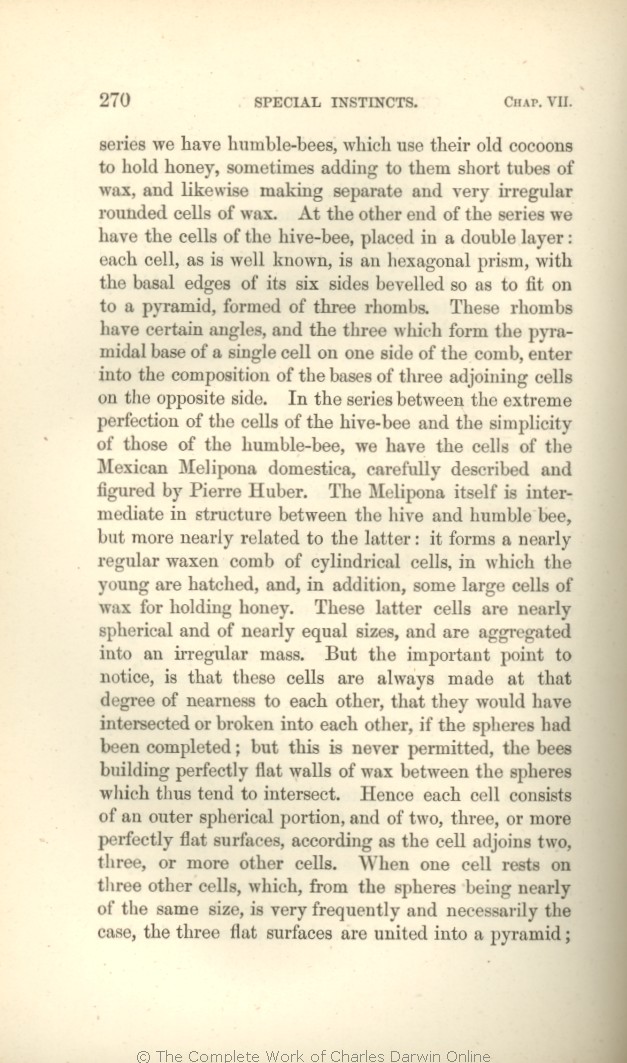series we have humble-bees, which use their old cocoons to hold honey, sometimes adding to them short tubes of wax, and likewise making separate and very irregular rounded cells of wax. At the other end of the series we have the cells of the hive-bee, placed in a double layer: each cell, as is well known, is an hexagonal prism, with the basal edges of its six sides bevelled so as to
fit | fit 1860 1861 1866 1869 | | join 1859 1872 |
| on to a pyramid, formed 1859 1860 1861 1866 1869 |
| an inverted pyramid, 1872 |
| comb, 1859 1860 1861 1866 1869 | | comb 1872 |
| humble-bee, 1859 1860 1861 1866 | | humble-bexe, 1869 | | humble-bee 1872 |
| latter: 1859 1860 1861 1866 | | latter; 1869 1872 |
| notice, 1859 1860 1861 1866 1869 | | notice 1872 |
| is 1859 1860 1861 1866 1869 | | is, 1872 |
| cells, 1866 | | cells 1859 1860 1861 1869 1872 |
| other, 1859 1860 1861 1866 1869 | | other 1872 |
| other, 1859 1860 1861 1866 1869 | | other 1872 |
| Hence 1859 1860 1861 1866 1869 | | Hence, 1872 |
| portion, 1866 1869 1872 | | portion 1859 1860 1861 |
| perfectly 1859 1860 1861 1866 1869 | perfectly 1872 |
| rests on 1866 1869 1872 |
| comes into contact with 1859 1860 1861 |
|









